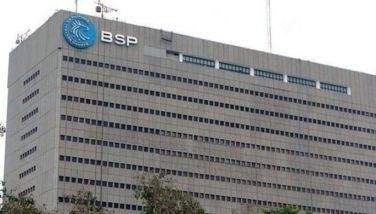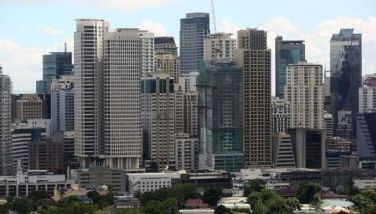Time and patience

Last week, the Federal Reserve (Fed) hiked its policy rate amid its ongoing campaign to bring down inflation. The latest rate hike of 25 basis points was lower than the 50-basis-point rate hike in December. Though Fed chair Jerome Powell signaled that there are more policy rate increases, market sentiment improved as investors focused on his more dovish tone.
More work to do
In his press statement, Powell reiterated the Fed’s commitment in taming inflation. Below are some of Powell’s comments that indicate continued Fed tightening.
“We’ve covered a lot of ground, and the full effects of our rapid tightening so far are yet to be felt. Even so, we have more work to do.”
“Restoring price stability will likely require maintaining a restrictive stance for some time.”
“Despite the slowdown in growth, the labor market remains extremely tight, with the unemployment rate at a 50-year low, job vacancies still very high, and wage growth elevated.”
“We continue to anticipate that ongoing increases in the target range for the federal-funds rate will be appropriate in order to attain a stance of monetary policy that is sufficiently restrictive to return inflation to two percent over time.”
Dovish turn
Despite the Fed’s resolve in fighting inflation, Powell’s comments were relatively more dovish than his past speeches. His quotes below expressed more optimism on the trajectory of inflation and growth prospects for the economy.
“Shifting to a slower pace will better allow the committee to assess the economy’s progress toward our goals.”
“But I would also say that that disinflationary process that you now see under way is really at an early stage. What you see is really in the goods sector. You see inflation now coming down because supply chains have been fixed, demand is shifting back to services, and shortages have been abated.”
“I will say that it is gratifying to see the disinflationary process now getting under way, and we continue to get strong labor market data.”
“We’re talking about a couple of more rate hikes to get to that level we think is appropriately restrictive.”
“I think policy is restrictive. We’re trying to make a fine judgment about how much is restrictive enough, that’s all.”
“My base case is that the economy can return to two percent inflation without a really significant downturn or a really big increase in unemployment.”
Wait and see
In his previous speeches, Powell was stubborn and obstinate. He was stern, determined, and extremely hawkish because he did not want people to be complacent about inflation. In contrast, Powell sounded less adversarial last week.
“We will continue to make our decisions meeting by meeting, taking into account the totality of incoming data and their implications for the outlook for economic activity and inflation.”
“Our forecast is that it will take some time and some patience, and that we’ll need to keep rates higher for longer. But we’ll see.”
Markets gain on Fed speak
The dovish tilt in Powell’s tone sparked an improvement in broad market sentiment. The S&P 500 was down one percent right before Powell’s statement. The market quickly reversed and the S&P 500 ended up one percent higher after Powell’s speech and dovish statements. The FTSE 100 closed at an all-time high of 7,901 last Friday amid signs that UK inflation has already peaked from its four-decade high. However, the US market fell last Friday in light of a much stronger than expected employment report and poor earnings results from Amazon and Google.
Bullish peso
The Philippine peso is one of the beneficiaries of slower Fed rate hikes, the US dollar reversal, and signs of peak inflation. The USD/PHP rate closed at 53.65 last week, up 1.4 percent for the week, 3.6 percent year-to-date, and 9.1 percent from its peak of 59. More importantly, the USD/PHP rate breached the key support level of 54.50. Based on technical analysis, this breakdown opens the window for the USD/PHP rate to trade in the range of 52 to 53.
Good news for Philippines
Last week, Finance Secretary Ben Diokno stated that the ongoing slowdown in Fed rate hikes is good news for the country. Diokno believes that domestic inflation has already peaked. He said that the government expects inflation to come down to 4.5 percent this year and revert to the official two to four percent target range in 2024.
The market and the Fed
In our article last week, we discussed the divergent views of investors and monetary officials (see Market vs. the Fed, Jan. 30, 2023). However, Powell’s speech and the market’s subsequent advance show that the Fed and the market wish for the same outcome. Both want inflation to subside and economic growth to be sustained. The Fed is cognizant that it has to strike a delicate balance between controlling inflation and supporting economic growth. At the same time, investors welcomed the dovish shift in recent statements by Powell and Fed officials even as they continue to fight inflation.
In his statement, Powell acknowledged the disinflationary process in the prices of goods, but also warned that the US labor market remained extremely tight. Last Friday, new data showed that January non-farm payrolls came in much stronger than expected while the US unemployment rate fell to 3.4 percent, the lowest since 1969. Considering this, the Fed has to be vigilant in managing inflation to ensure that it does not come back with a vengeance. As Powell said, taming the highest inflation of this generation “will take some time and some patience.” Although there are telltale signs of a peak in inflation, it appears that Powell is correct in saying that the Fed has “more work to do.”
Philequity Management is the fund manager of the leading mutual funds in the Philippines. Visit www.philequity.net to learn more about Philequity’s managed funds or to view previous articles. For inquiries or to send feedback, please call (02) 8250-8700 or email ask@philequity.net.
- Latest
- Trending


























